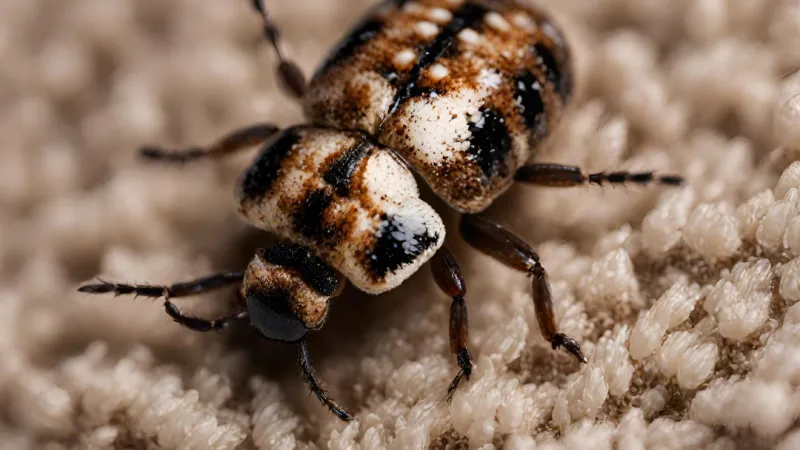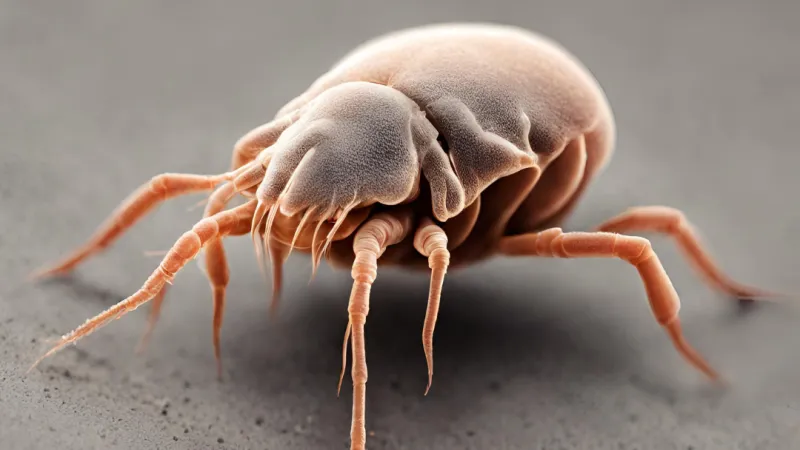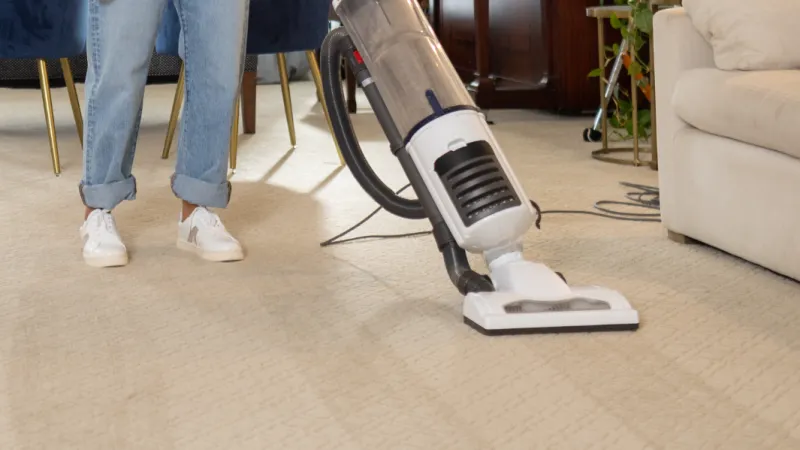What Is Dust? Its Composition and Its Effects on Health and Home
Dust is a common and often underestimated presence in our daily lives. It settles on surfaces, hides in corners, and can even trigger an occasional sneeze. But exactly what is dust, and how does it come into being?
In this article, we'll delve into the world of dust, unraveling its composition, exploring the science of its formation, and shedding light on its role in our living spaces.
What is dust made of?
Dust is composed of a wide variety of microscopic particles that can vary depending on its source and location. Common components of household dust include:
Dead Skin Cells: Humans and pets shed tiny skin cells daily, and these make up a significant portion of indoor dust.
Soil and Outdoor Particles: Dust can contain small soil particles and outdoor debris that are tracked into the indoor environment through footwear or ventilation.
Pollen: Airborne pollen grains from plants and trees can find their way into dust.
Fabric Fibers: Particles from clothing, upholstery, and curtains contribute to the composition of dust.
Pet Dander: If you have pets, tiny skin flakes and hair from them can become part of the dust. (Learn which dog breed is the cleanest)
Insect Waste: Insect fragments and their waste, such as those common to dust mites' feces and body parts, can also be present in household dust.
Microscopic Organisms: Dust mites, as well as bacteria and fungi, may be found in dust, especially in areas with high humidity.
Indoor Air Pollution: Indoor air pollutants like tobacco smoke or chemicals from cleaning products can settle as particles in dust.
Contrary to popular belief, dust is not exclusively composed of human skin cells. Dust typically consists of approximately 70-80% dead skin cells, but the specific composition of dust can vary depending on the environment and human activities.
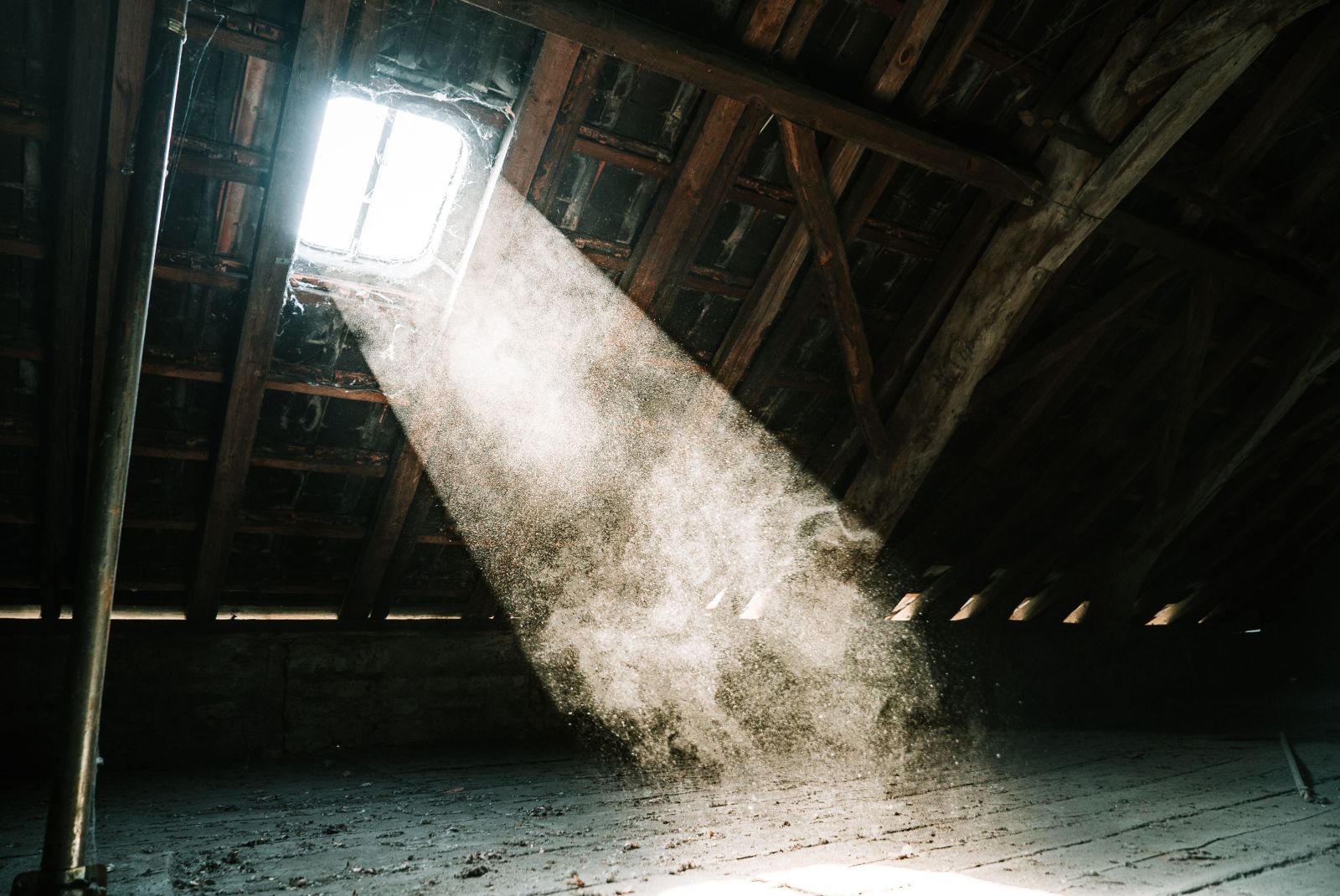
What causes dust to form?
If you have ever wondered how dust forms, know that dust formation is a consequence of both natural processes and human activities. Here's how dust is formed:
Natural processes cause dust to form
Dust is naturally created through various environmental processes. One of the primary natural sources is soil erosion, where wind and water dislodge tiny soil particles and carry them into the air. This is especially common in arid regions where loose soil is prevalent. Natural sources also include the release of pollen from plants and the decay of organic matter.
Human activities cause dust to form
Human activities play a significant role in dust formation. These activities generate airborne particles that can eventually settle as dust. Common contributors include:
- Shedding Skin Cells: The constant shedding of dead skin cells by humans and pets releases particles into the environment.
- Cooking: Cooking, particularly activities like frying or baking, can release fine particulate matter into the air, which can become dust.
- Cleaning: The act of cleaning itself can disturb settled dust and temporarily increase airborne dust levels. Cleaning activities can also generate dust when sweeping, dusting, or vacuuming.
- Pets: The movement of pets in a household can release pet dander and fur into the air, contributing to dust.
- Outdoor Particles: Outdoor activities, like gardening or entering the home with dirt on shoes, can introduce external particles into indoor environments. Construction and Renovation: Activities that involve construction, renovation, or demolition can create substantial dust due to the disturbance of building materials.
- Indoor Air Pollution: The use of certain products like tobacco and burning candles can release fine particulate matter into the indoor air, which can settle as dust.
The airborne particles generated by these natural and human-induced processes remain suspended in the air temporarily until they lose their kinetic energy and settle onto surfaces as dust. Dust formation is an ongoing process that can vary depending on location, lifestyle, and environmental conditions.
Many of these work to contribute to dusty bathrooms and other dusty rooms in your home.

How does dust accumulate?
Dust accumulates as suspended airborne particles settle on surfaces due to the influence of gravity. Some particles adhere to each other through electrostatic forces, forming dust bunnies in less-accessible nooks and crannies.
Textiles and fabrics, such as carpets, curtains, and upholstered furniture, can get dust embedded in its fibers, making them reservoirs for dust.
How fast does dust accumulate?
The rate of dust accumulation is variable, dependent on factors such as location, activity levels, ventilation, humidity levels (as higher humidity can cause dust particles to settle faster), cleaning habits, pet ownership, building construction, and geographic factors.
In most cases, visible dust buildup occurs within a week to several weeks in indoor environments, making regular cleaning an essential part of household maintenance.
Where Does Dust Come From (Even in an Empty House)?
Dust continues to accumulate in seemingly vacant spaces due to external factors. Airborne particles from the outdoors, ventilation systems, air pollution, and natural human skin cell shedding contribute to dust formation. These particles eventually settle on indoor surfaces, persisting even in unoccupied environments.
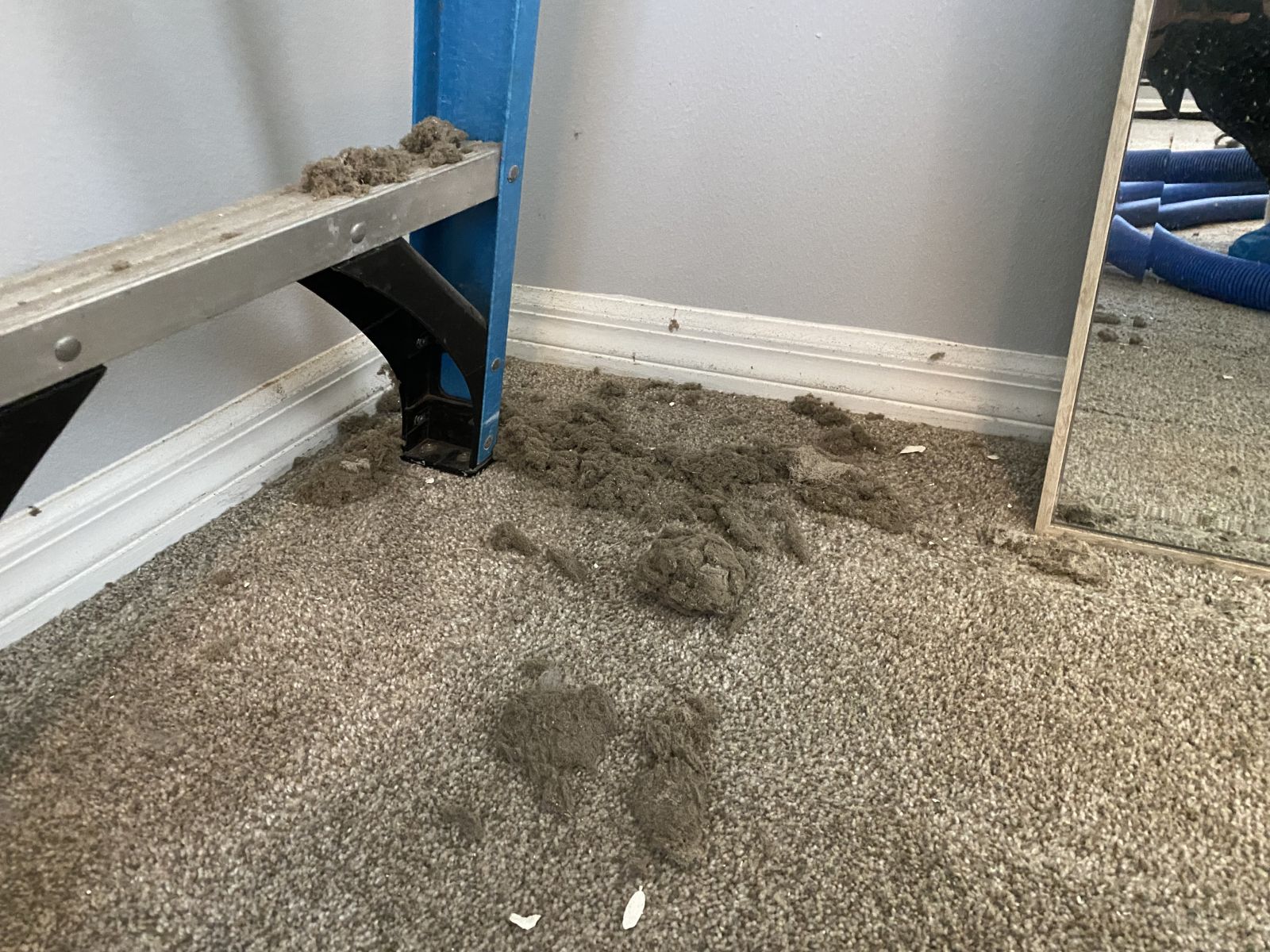
What are dust bunnies?
A "dust bunny" is a colloquial term used to describe small, clumped accumulations of dust and debris that tend to collect in corners, under furniture, and in other hidden or less frequently cleaned areas of a home. Dust bunnies are typically composed of a mixture of dust, lint, hair, pet dander, and other fine particles that have gathered together due to static electricity and sometimes moisture.
These accumulations often have a rounded or irregular shape, resembling small, fuzzy balls or clumps, and can vary in size depending on the amount of dust and debris in the environment. Dust bunnies are a common sight in many households, especially in areas that are less frequently cleaned, as they tend to form where dust and small particles settle and are less likely to be disturbed by regular cleaning routines.

Is dust bad for you?
Dust can have both short-term and long-term health implications, but the extent of its impact on an individual's health largely depends on various factors.
Here's a breakdown of the potential health effects associated with exposure to dust:
Short-term health effects of dust:
- Respiratory Irritation: Inhaling dust can lead to immediate irritation of the respiratory system, causing symptoms like sneezing, coughing, and a runny or stuffy nose.
- Allergic Reactions: Dust often contains allergens, such as pollen, pet dander, or dust mites, which can trigger allergic reactions in sensitive individuals. Allergy symptoms may include itching, watery eyes, and skin rashes.
- Asthma Exacerbation: People with asthma may experience worsening symptoms, increased airway inflammation, and bronchoconstriction when exposed to allergenic dust particles, which can potentially lead to asthma attacks.
Long-term health effects of dust:
- Chronic Respiratory Issues: Prolonged exposure to high levels of dust, especially if it contains toxic components like asbestos, can lead to chronic respiratory problems such as chronic obstructive pulmonary disease (COPD).
- Cardiovascular Health: Recent research suggests that long-term exposure to fine particulate matter, which is a component of dust, may increase the risk of cardiovascular diseases, including heart attacks and strokes.
- Asbestos-Related Diseases: In cases where dust contains asbestos fibers, long-term exposure can lead to severe and often fatal diseases like asbestosis and mesothelioma. Asbestos exposure is highly detrimental to health and requires immediate attention.
It's important to note that the health impact of dust varies depending on individual factors, including pre-existing health conditions, sensitivity to allergens, and the specific composition of the dust in a given environment. To minimize the potential health risks associated with dust, practicing good indoor hygiene, regular cleaning, proper ventilation, and, in some cases, the use of air purifiers can be effective strategies to reduce dust levels and mitigate its impact on health.

What to do after inhaling dust
Inhaling a small amount of dust is generally harmless and a common occurrence in daily life, but it may lead to mild discomfort.
In cases where significant exposure or discomfort occurs, leading to respiratory distress or irritation, do the following:
- Move to Fresh Air: If you believe you've inhaled a substantial amount of dust and experience respiratory discomfort, step outside or to an area with clean, fresh air. This can help dilute any irritants in your airways.
- Stay Calm: Panicking can exacerbate breathing difficulties. Try to remain calm and focused while addressing the situation.
- Cough and Clear Your Throat: If you feel the need to cough, do so gently. Coughing can help clear your airways of any trapped particles.
- Rinse Your Mouth and Nose: Gently rinse your mouth and nose with water to help remove any dust particles that may have entered these areas.
- Stay Hydrated: Drinking water can help soothe your throat and airways. It can also assist in clearing any irritants.
- Use a Saline Nasal Rinse: If you're experiencing nasal discomfort, using a saline nasal rinse may help clear your nasal passages of irritants.
- Rest and Monitor: If you continue to experience discomfort or breathing difficulties, consider resting and monitoring your condition. If symptoms persist or worsen, seek medical attention.
- Seek Medical Assistance: If you experience severe breathing difficulties, persistent coughing, chest pain, or if you know you've inhaled harmful substances (e.g., toxic chemicals or asbestos), seek immediate medical attention. Emergency services may be necessary in severe cases.
Minimizing the risk of inhaling harmful dust particles involves maintaining clean indoor environments and adhering to personal hygiene practices.

Do carpets cause dust?
Carpets themselves do not cause dust, but they can play a role in the accumulation and retention of dust particles. Here's how carpets can be associated with dust in indoor environments:
Dust Accumulation: Carpets can trap and collect dust that settles on their surface. When dust particles in the air settle onto the carpet, they become embedded in the fibers. This accumulation occurs gradually over time.
Dust Resuspension: While carpets can retain dust, they can also release dust particles back into the air when disturbed. Activities like walking on the carpet or vacuuming can agitate the accumulated dust, causing it to become airborne.
Allergenic Particles: Dust that collects in carpets may contain allergenic particles like pollen, pet dander, and dust mites. When this dust is disturbed, it can contribute to indoor air pollution and potentially trigger allergic reactions in sensitive individuals.
To manage dust accumulation in carpets and reduce its impact on indoor air quality, regular cleaning and maintenance are essential. Here are some strategies to address dust in carpets:
Regular Vacuuming: Frequent vacuuming with a vacuum cleaner equipped with a high-efficiency particulate air (HEPA) filter can help remove dust and allergens from carpets.
Deep Cleaning: Periodic deep cleaning of carpets from Zerorez® using methods like hot water extraction like can effectively remove embedded dust and allergens and improve air quality.
Reducing Foot Traffic: Minimizing foot traffic in carpeted areas can help reduce dust accumulation and its resuspension.
Use of Doormats: Placing doormats at entrances can help prevent the introduction of external dirt and dust into the home, reducing the overall dust load.
Choosing Low-Pile Carpets: Carpets with low-pile fibers tend to accumulate less dust compared to high-pile or shaggy carpets.
In summary, carpets can trap and retain dust, making them a potential source of indoor dust. Proper cleaning and maintenance are key to managing dust in carpeted areas and maintaining good indoor air quality.

How often should you dust?
The frequency of dusting your home can vary depending on factors such as your location, lifestyle, and individual sensitivities. In general, it's recommended to dust your home on a regular basis to maintain clean and healthy indoor environments. Here are some general guidelines for how often you should consider dusting:
Weekly Dusting: Dusting your home once a week is a common recommendation for most households. This frequency is often sufficient to remove surface dust and allergens, preventing their buildup.
Bi-Weekly (Every Two Weeks): If you live in an area with lower dust levels, have no allergies, or maintain a relatively clean and clutter-free home, you may be able to dust less frequently, such as every two weeks.
High Dust Areas: Homes located in areas with high levels of outdoor dust or near construction sites may require more frequent dusting. In such cases, a weekly or more frequent dusting routine may be necessary.
Allergies or Respiratory Conditions: If you or someone in your household has allergies, asthma, or other respiratory conditions, more frequent dusting may be required. Reducing allergen levels is essential for maintaining good respiratory health.
Pet Owners: Pet owners may also need to dust more frequently due to the presence of pet dander and fur, which can contribute to dust accumulation. A weekly or bi-weekly schedule is often recommended in such households.
High Traffic Areas: Focus on dusting high-traffic areas and surfaces that are more prone to dust accumulation, like shelves, tabletops, and electronics. Less frequently used areas may require dusting less often.
Consider Your Sensitivities: Your own sensitivities and preferences should also guide your dusting schedule. If you notice visible dust accumulation or start experiencing allergy symptoms, it's a sign that more frequent dusting is needed.
It's important to note that while dusting is essential for maintaining a clean and healthy living space, it is just one part of a comprehensive cleaning routine. Regular vacuuming, cleaning of bedding and curtains, and proper ventilation are also important aspects of indoor maintenance. Adjust your dusting frequency based on your specific needs and the conditions of your home to ensure a comfortable and clean living environment.
In the intricate world of dust, we've uncovered its secrets, from its composition to the science behind its formation. Now, it's up to us to take charge of the dust in our lives.
As we've learned, dust can impact our health and well-being, and it's an ever-present visitor in our homes. To tackle the dust effectively, consider enlisting the help of professionals.
Professional carpet cleaners like Zerorez can rid your home of dust trapped in your carpets and their professional air duct cleaning service can ensure that your indoor air quality remains pristine. By taking these steps, you not only create a cleaner and healthier living environment but also ensure that dust remains a guest that doesn't overstay its welcome.

